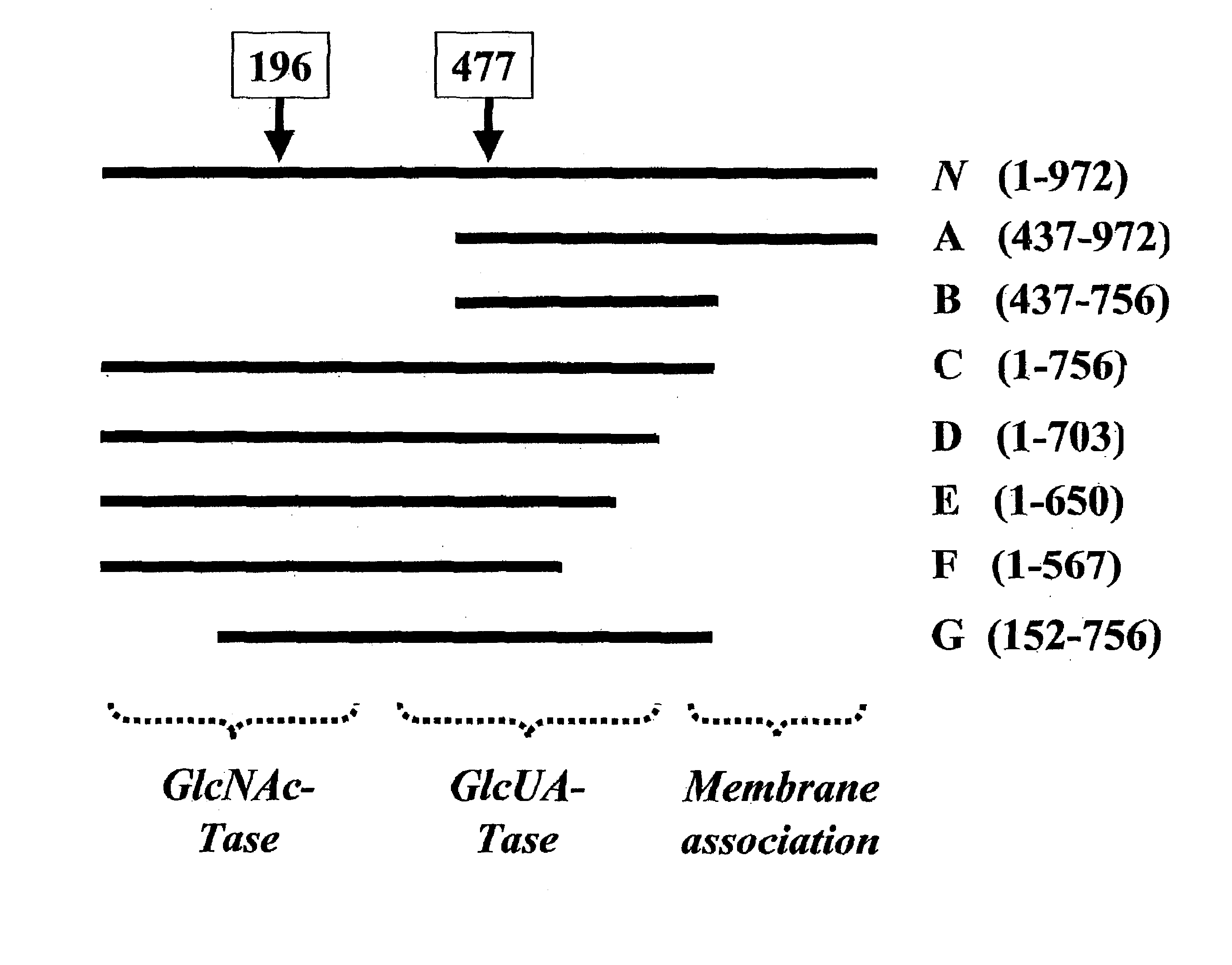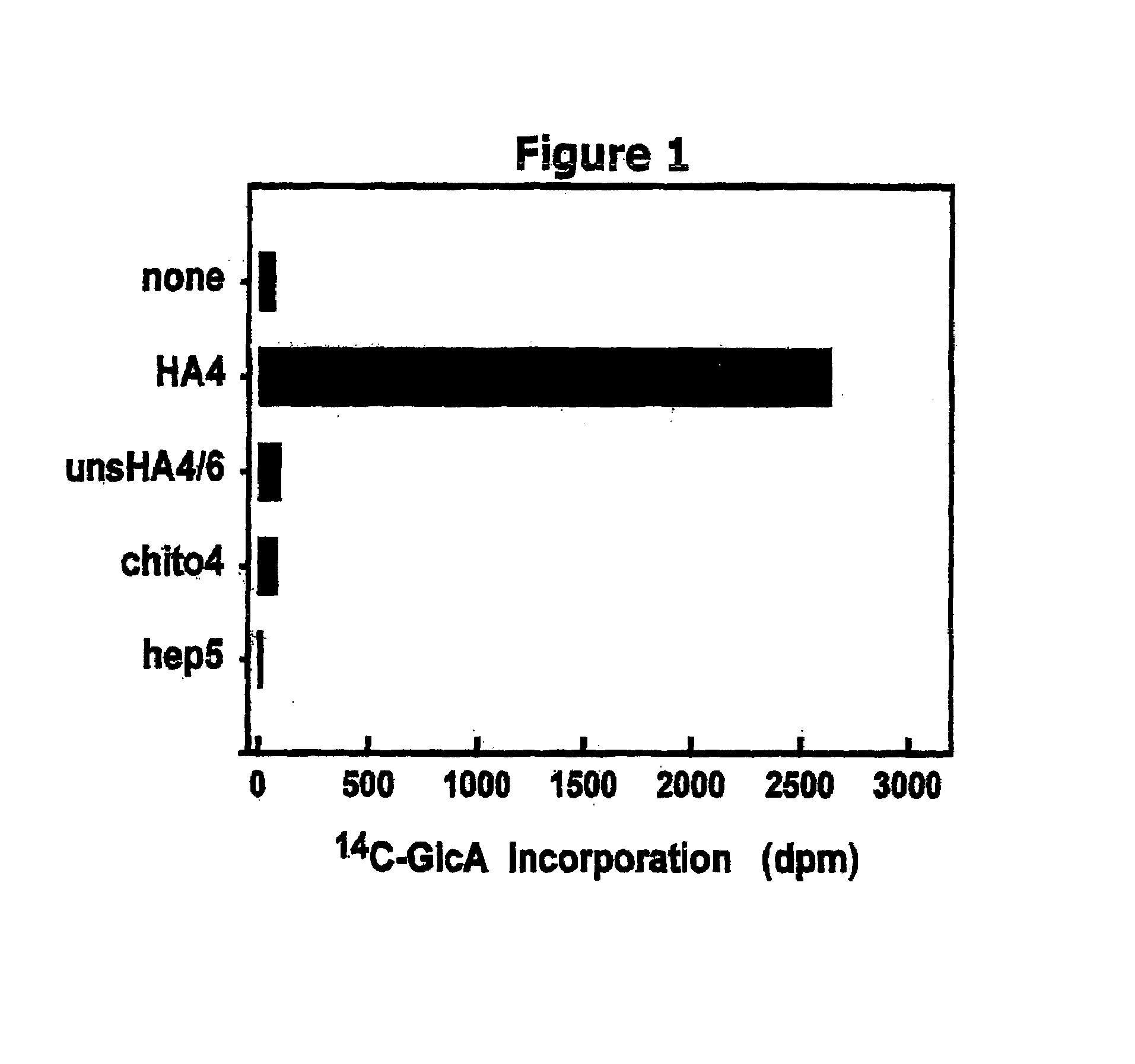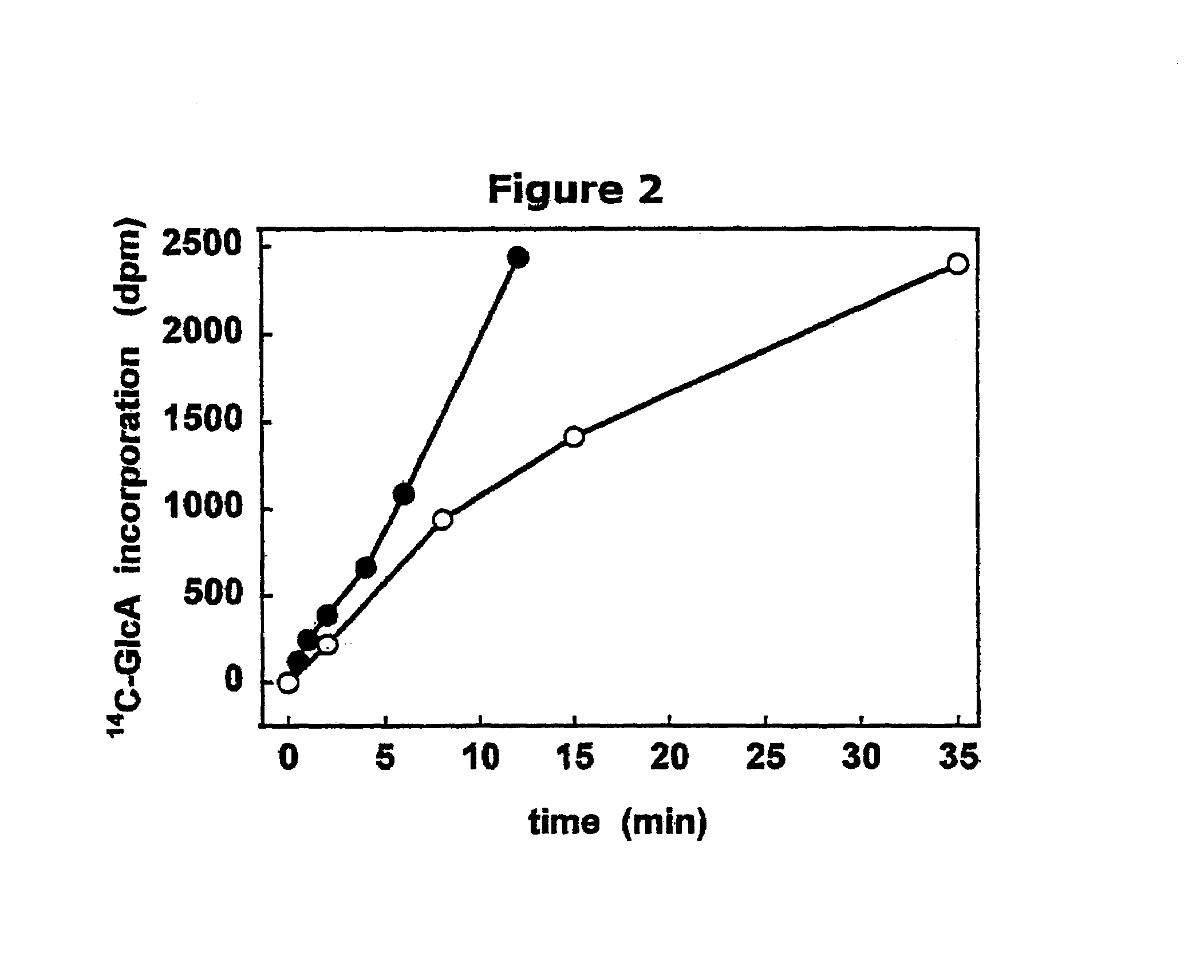Targeted glycosaminoglycan polymers by polymer grafting and methods of making and using same
a glycosaminoglycan and polymer technology, applied in the field of polymer production methods, can solve the problems of difficult manipulation of membrane-bound synthase proteins, and inability to achieve large-scale reactions. the effect of reproducibility and synthetic control
- Summary
- Abstract
- Description
- Claims
- Application Information
AI Technical Summary
Benefits of technology
Problems solved by technology
Method used
Image
Examples
Embodiment Construction
[0081]Before explaining at least one embodiment of the invention in detail, it is to be understood that the invention is not limited in its application to the details of construction and the arrangements of the components set forth in the following description or illustrated in the drawings. The invention is capable of other embodiments or of being practiced or carried out in various ways. Also, it is to be understood that the phraseology and terminology employed herein is for purpose of description and should not be regarded as limiting.
[0082]Glycosaminoglycans (“GAGs”) are linear polysaccharides composed of repeating disaccharide units containing a derivative of an amino sugar (either glucosamine or galactosamine). Hyaluronan [HA], chondroitin, and heparan sulfate / heparin contain a uronic acid as the other component of the disaccharide repeat while keratan contains a galactose. The GAGs are summarized in Table I.
[0083]
TABLE IPost-PolymerizationModificationsPolymerDisaccharide Repe...
PUM
| Property | Measurement | Unit |
|---|---|---|
| Temperature | aaaaa | aaaaa |
| Mass | aaaaa | aaaaa |
| Mass | aaaaa | aaaaa |
Abstract
Description
Claims
Application Information
 Login to View More
Login to View More - R&D
- Intellectual Property
- Life Sciences
- Materials
- Tech Scout
- Unparalleled Data Quality
- Higher Quality Content
- 60% Fewer Hallucinations
Browse by: Latest US Patents, China's latest patents, Technical Efficacy Thesaurus, Application Domain, Technology Topic, Popular Technical Reports.
© 2025 PatSnap. All rights reserved.Legal|Privacy policy|Modern Slavery Act Transparency Statement|Sitemap|About US| Contact US: help@patsnap.com



